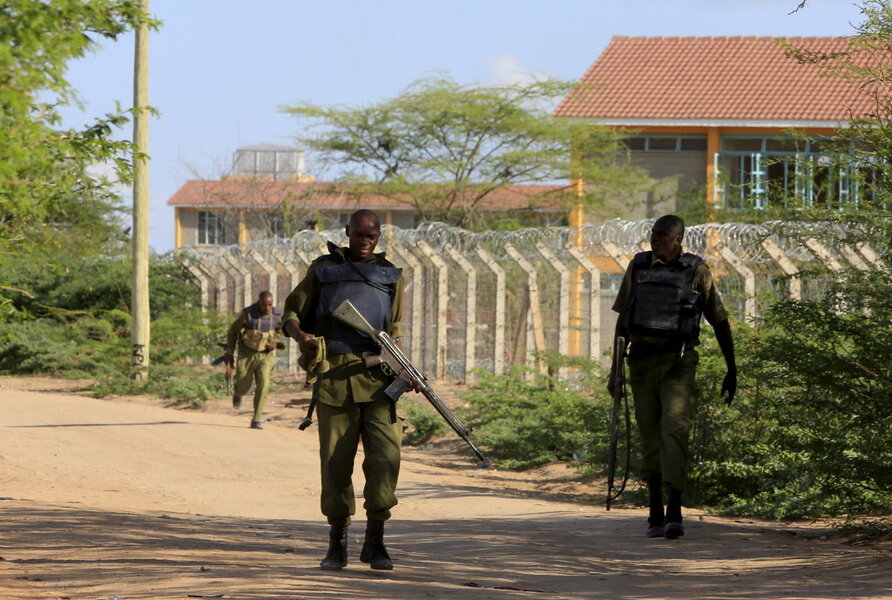Kenya university attack puts security capabilities under fresh scrutiny
| Nairobi, Kenya
A dramatic attack by Al Shabab at a university in a fortified northeastern town is raising questions about Kenya’s capacity to respond to the Islamist militant group.
Somalia-based Al Shabab has been a constant threat in the three counties that sit on Kenya’s eastern border with Somalia, but most of its attacks have been outside major population centers. That has made the assault on the university in Garissa particularly jarring – not only because the town is home to both military barracks and police headquarters, but because it followed high-profile warnings about a threat to a “major university.”
For Kenya, this latest attack underscores one of the key hurdles to curbing threats from Al Shabab: the porosity of the border between Somalia and Kenya's Mandera, Wajir, and Garissa counties. And it may increase pressure to take more assertive steps to close the gaps in a sparsely populated and lightly patrolled region.
“They don’t have the capacity to protect all the targets. This is why they need to close the border,” says Andrew Franklin, a Nairobi-based security analyst who has long argued for the construction of a wall along the entirety of the border with Somalia. Last month, Kenya announced plans to build a wall along the border between Mandera and Somalia.
“This was a target waiting to be attacked. It’s like Mpeketoni,” he says, referring to a town in Lamu, the northernmost county on the coast that was attacked in June 2014 despite intelligence warnings. “This is a great way to demonstrate that the government of Kenyan cannot control its own territory.”
At least 147 people have been killed -- besides four attackers -- and 79 injured, according to security officials. The siege has ended, Kenya's disaster response agency said.
Kenya has been on high alert heading into Easter weekend, a four-day weekend here when many travel to visit family. Garissa, the largest town in the county of the same name, has been considered one of the safest spots in the region. The town university, with a majority Christian student body, only opened its doors last year.
“If you rank Garissa among the three [counties], Garissa was kind of enjoying relative calm,” says Alinoor Moulid, a local journalist, noting there hadn’t been a large-scale attack since 2012. “Garissa is 200 km [125 miles] from the border. In terms of proximity, it should be ideal to manage the security.”
Mr. Moulid says that security personnel executed more searches and roadblocks and put up checkpoints at the entry points to the town in response to the warnings, but it still was not enough.
Warnings about possible targeting of Nairobi shopping malls around the Christian holiday are also circulating, raising the specter of another Westgate Mall, which was attacked in 2013 and resulted in 67 deaths during a four-day siege. Some NGOs advised foreign staff against travel to the coast and Britain and Australia ratcheted up their travel advisories last week.
President Uhuru Kenyatta slammed the warnings on Tuesday, saying that Kenya was as safe as any other country. “The travel advisories being issued by our friends are not genuine. I have not heard of any travel advisory issued to those visiting Paris, which recently experienced a terror attack,” he said.
Al Shahab has vowed to stage attacks as long as Kenya's forces are on the ground in Somalia fighting Al Shabab.
In January, Wajir County Comissioner Fredrick Shisia, who oversees security, acknowledged that the border region is too vast and empty to properly secure. Herdsmen and fighters can move freely between the two countries.
A spate of attacks in late 2014 toppled Kenya’s top two security officials, and the university attack will be the first true test since Inspector General of Police Joseph Boinett and Interior Secretary Joseph Nkaissery took over.







